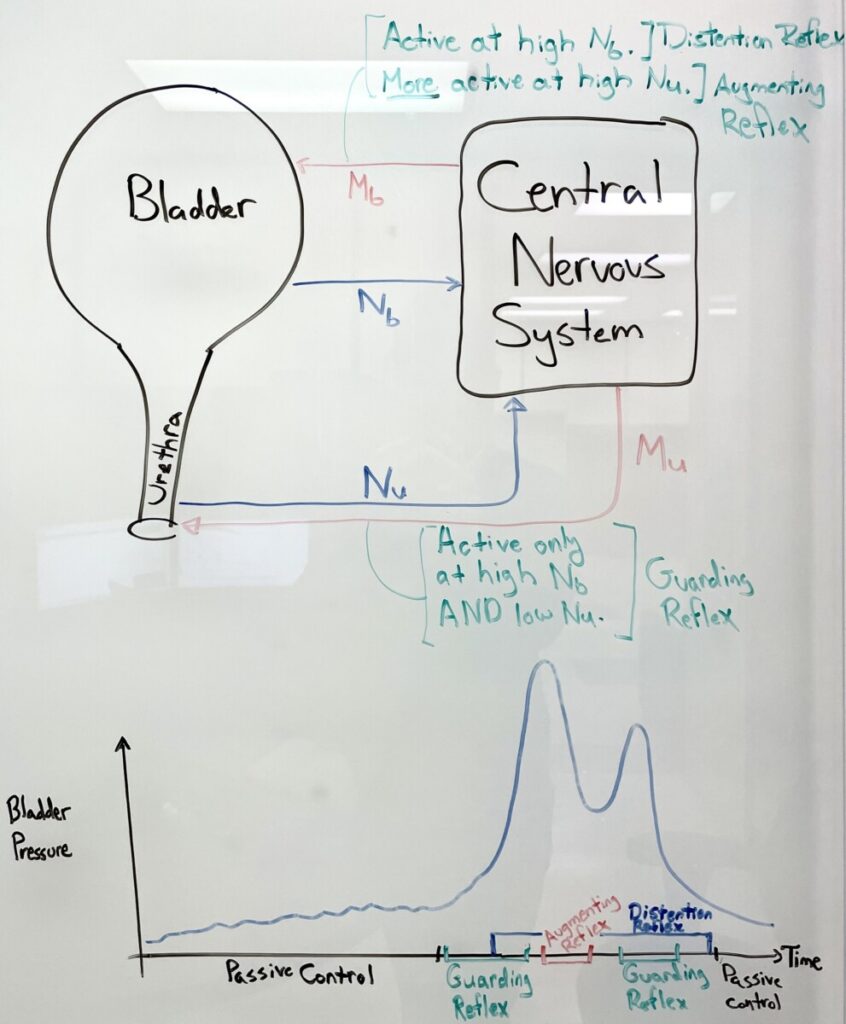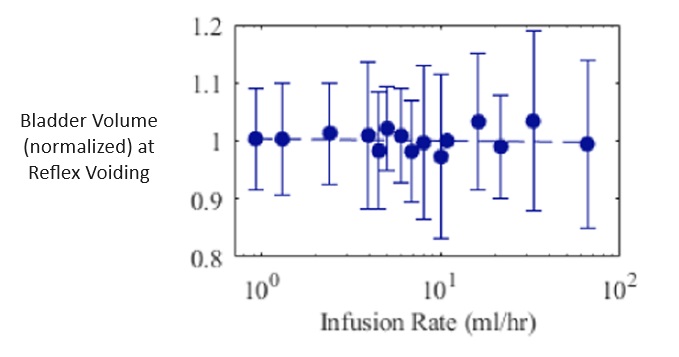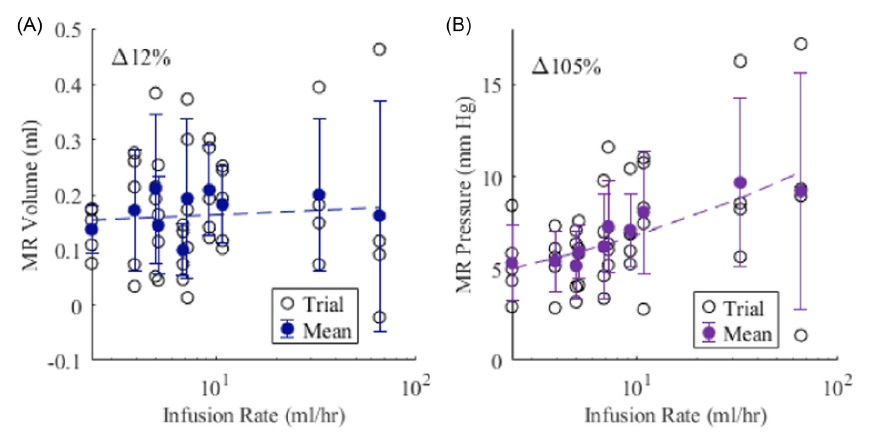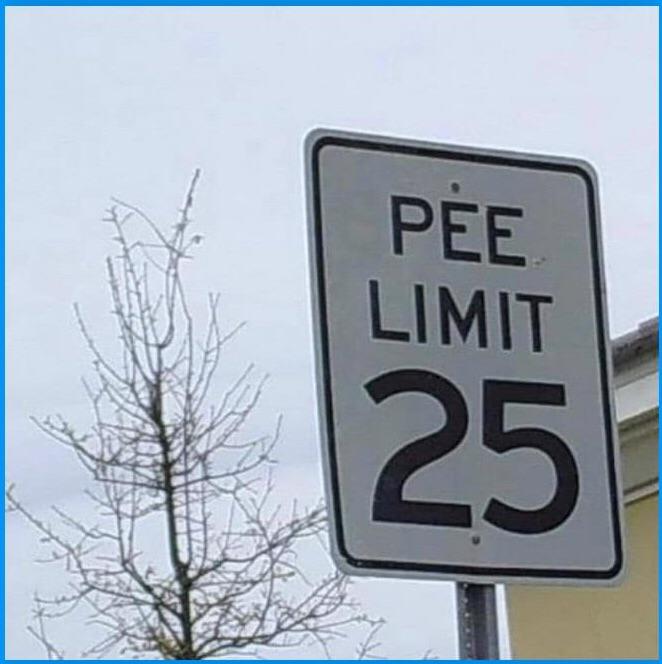The lower urinary tract is orchestrated by an intricate web of harmonizing reflexes that act constructively to help you pee effectively (or to not pee effectively). [See Fowler and de Groat or myself on the topic.] This is true even when we ignore or remove (say, by anesthesia) all the complicated conscious-level decision making that goes into deciding when is the right time to pee (e.g., am I in the bathroom?). There is a delicate dance between all the muscles and sensations in the urinary bladder and urethra that need to align for the system to function well. Neural signals from the bladder processed subconsciously (in local neuron bundles, the spinal cord, and even brain areas) help decide when to tighten up or loosen the urethral sphincter and when to contract or relax the bladder muscle.
There is a nagging question about this process: how exactly does the subconscious “decision” get made about when to start a void?
As an anesthetized person’s (or animal’s) bladder slowly fills, the urinary tract eventually initiates a reflex voiding event where the bladder pushes out the urine. This is not a passive process. During filling the urinary tract is tries to maintain continence by silencing (inhibiting) the bladder muscles and often actively clenching the urethral sphincter to block the urine’s escape. When the reflex voiding event starts it doesn’t (under healthy conditions) look like a leak caused by a highly pressurized overflowing bladder, but rather, prior to any leaking, the bladder begins an active contraction closely followed by a sudden sphincter relaxation. The question is how does the urinary tract decide when this should happen. If we knew the answer, aside from it just being cool knowledge to have about physiology, it would let us focus our efforts in developing new treatments more effectively, especially for syndromes that currently have no real treatments available, like underactive bladder.

Image on the left is definitely something more official than me just standing at my whiteboard and drawing a diagram that shows a couple of the reflexes controlling voiding (top) and when those reflexes are active during the fill-to-void cycle (bottom – not to scale, temporally).
To start getting at how the urinary tract “decides” its time to void, Daniel Jaskowak led some work in the lab where we pushed fluid into the bladder at different speeds (volumetric flow rates) to see if that influences when the void starts. The thought is that if the bladder monitors tension in its walls (a sensible thing for any self-respecting sensory neuron to be monitoring, according to Le Feber and Satchell among others) and faster filling generates more tension, then we should see a voiding reflex at lower urine volumes. In other words, pushing fluid into the bladder quickly creates more tension at the same fill volume than if we had pushed it in slowly.
We did not see that result at all, and in fact, it looked like no matter how fast we pushed fluid into the bladder (and we tried some ludicrous rates) we always saw the voiding reflex trigger at the same volume. The simplest explanation is perhaps that there is a volume threshold which, once crossed, triggers the voiding reflex. The idea has even been postulated that there are neurons that sense bladder volume. But, from an engineering perspective, it is hard to understand how a sensor that only sees its local piece of bladder tissue could know much about the global volume the bladder contained, especially considering the bladder’s complex mechano-geometry. Thus, it seems more likely that the sum total of local tension-sensing neurons contribute their information to a central processing circuit in the spinal cord that infers volume from the aggregate population of tension sensors, which can then be used as a threshold crossing detector.

We checked pressure too, and the relationship was not flat like it was for volume (see an example animal below). This means the higher flow rates were generating more pressure/tension in the bladder but that there was not a threshold-like trigger where the voiding reflex would engage.

But perhaps the most striking result of all was the sheer variation across repeated fill-to-void trials. Even within a single animal repeated trials spanned a huge range. Probably this means we are not measuring (and thus accounting for) some of the fundamental determinants of how the nervous system’s reflex control scheme regulates the urinary tract.
As usual, this means if we are ever going to get to a quantitative model worthy of making functional predictions we are going to need more investigation into how exactly the urinary tract is processing these sensory signals and how it integrates them to keep bladders peeing expeditiously and on demand.
Jaskowak, D. J. and Z. C. Danziger (2023). “Reflex voiding in rat occurs at consistent bladder volume regardless of pressure or infusion rate.” Neurourol Urodyn 2023; 42: 1532-1546.
